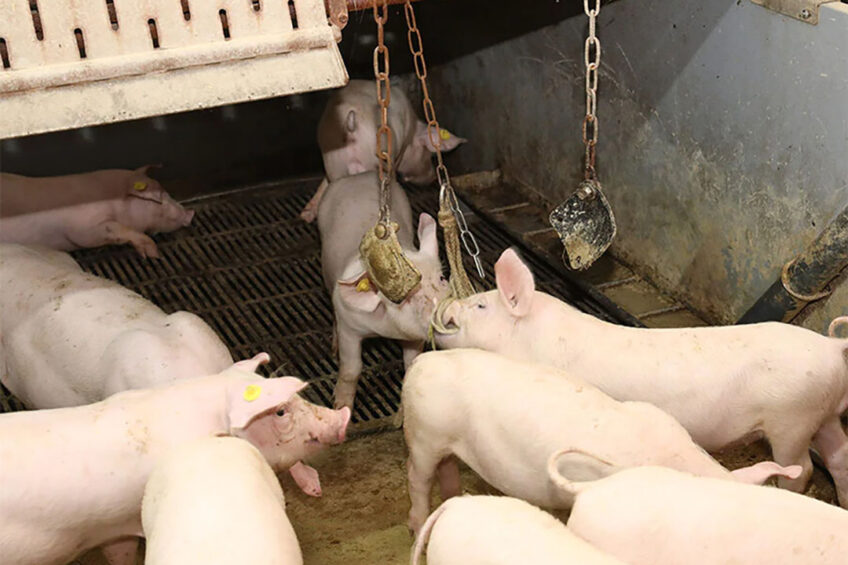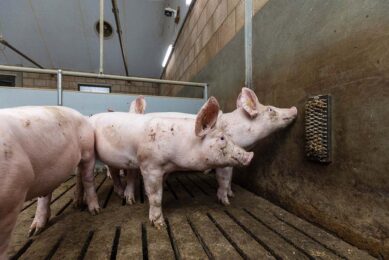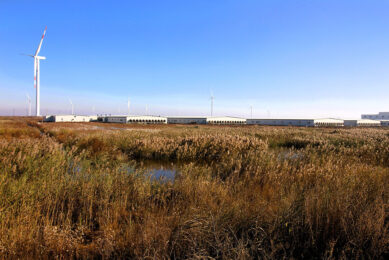‘Compensation per long-tail finishing pig should be € 10-€ 31’

Pig farmers would have to account for extra costs when delivering pigs with their tails intact. In the Netherlands, the compensation they need should be between € 10 and € 31 per finishing pig. Those amounts cover all costs pig farmers have to pay when keeping pigs with long tails.
Wageningen Economic Research, part of Wageningen University & Research, the Netherlands, calculated that amount recently. The calculation was commissioned by a coalition focused on vital pig production in the Netherlands earlier this summer, aimed at figuring out how keeping pigs with entire tails could be made possible. The outcomes were based on model calculations, using existing scientific literature as well as interviews to support the calculations.
Starting positions of farms
According to Robert Hoste, senior pig production economist, the spread in compensation is caused by the large differences between the starting positions of farms. A farm that already operates according to the animal welfare label “Beter Leven” (Better Life) which already receives 1 star, will have to put in less effort than farms with pigs on 0.8 m² or piglets on all-plastic slats.
3 types of pig farms
The costs to be incurred range from € 9 to € 26 per pig delivered. To arrive at these costs, Wageningen Economic Research classified pig farms into 3 types:
Farms classified as Type A are technically out of date with fattening pigs on 0.8 m² and piglets on full plastic grids and insufficient feeding and drinking areas. A sow farm of this type will have to invest about € 10.50 per piglet for pen modifications, labour and other costs. For a finishing pig farm, it is € 15.70.
Type C farms are up-to-date and operate according to the “Beter Leven” requirements with finisher pigs on 1 m², weaned piglets on 0.4 m² and permanent pen enrichment. A farm of this type will have to think of additional costs of € 3.50 per piglet; for a finishing pig farm that would be € 5.30.
Type B farms fall in-between.
€ 3 levy for transition period
On top of the annual costs, the transition to long-tailed pigs will add € 3 per delivered pig in “learning fees.” That money is needed because in principle there are more biting incidents and the costs should be covered.
According to Stan Quinten, managing director at Netherlands-based meatpacker Meat Friends, this calculated fee is in line with the costs of € 10 the concept Best Star Meat is already paying per pig for keeping tails intact. Best Star Meat can settle this fee with supermarkets, where 50% of its pork is sold. Quinten indicated that it is important to involve restaurants and food service because that is also where a large part of sales lie. It has turned out not to be very easy to convince those market players of the importance of long tails.
Money from market is challenge
As far as the Dutch Pig Production Organisation (POV) is concerned, compensation should come from the market and thus be paid by consumers. From the Central Bureau Food Trade (CBL), Jennifer Muller, sustainability manager, indicated that supermarkets are behind the animal welfare ambitions.
Retail organisations have also indicated to aim to include long tails in long-term partnerships and agreements with their suppliers. When asked how retailers are conforming to further sustainability requirements, Muller said the commitment to this is growing.
More European cooperation
The trend is towards more products from the Netherlands being produced against higher standards. According to Robert Hoste, there will have to be more European cooperation in this area to prevent Dutch pork from pricing itself out of the European market due to the higher price. Quinten agrees: “Especially outside the EU, selling more expensive pork because of higher animal welfare is becoming a big challenge.”
 Beheer
Beheer








 WP Admin
WP Admin  Bewerk bericht
Bewerk bericht